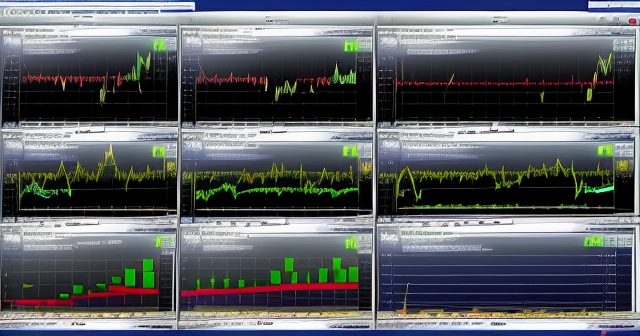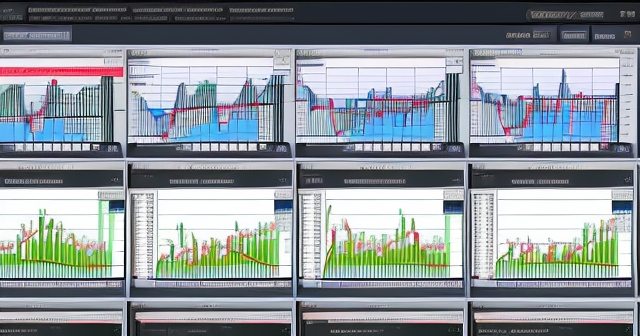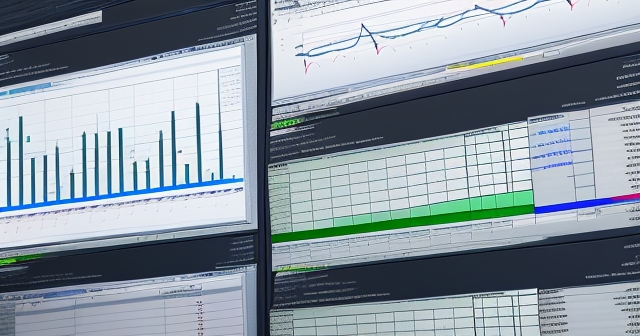Understanding the Language of Financial Markets: Decoding Pips vs. Basis Points
Navigating the world of finance can feel like learning a new language. It’s filled with specific terms and units of measurement that are absolutely crucial for understanding how markets move, how investments perform, and even how much it costs to borrow money. Precision is key, and overlooking the subtle differences between terms can lead to significant misunderstandings.
Today, we’re going to tackle two such fundamental units that, while both measure small changes, operate in distinct corners of the financial universe and are often a source of confusion for newcomers: Basis Points (bps) and Pips. Think of us as your guide on this journey to financial fluency. We’ll break down what each term means, where you’ll encounter them, and most importantly, highlight the essential differences so you can read market reports, analyze charts, and talk finance with confidence.
Why is this distinction so important? Because even seemingly small changes, when measured precisely, can have immense financial implications. A shift of just a few basis points in an interest rate can affect millions of borrowers, and a movement of a handful of pips in a currency pair can determine profit or loss for a Forex trader. Let’s dive in and make sense of these vital units.

Let’s start with Basis Points, commonly abbreviated as bps. At its core, a basis point is a unit of measurement that represents one one-hundredth of one percent. In mathematical terms, 1 basis point = 0.01% = 0.0001. It’s essentially a very specific way to talk about percentage changes or differences.
- Precision: Basis points provide clarity in financial discussions, ensuring there is no ambiguity in what is being measured.
- Standardization: Using basis points as a unit maintains uniformity across various financial reports and analyses.
- Consensus: Financial professionals broadly accept basis points, allowing for common understanding in markets.
Imagine you’re discussing interest rates. Saying an interest rate increased by 1% is clear enough. But what if it increased by a much smaller amount, say from 2.50% to 2.60%? That’s a 0.10% change. Expressing this as 10 basis points (10 * 0.01%) provides a standardized, less ambiguous way to communicate this small increment. It avoids potential confusion that might arise from discussing percentage *points* versus percentage *change*.
Why use basis points instead of just fractions of a percent? Primarily for clarity and precision, especially when dealing with relatively small percentage changes in values that are already expressed as percentages, like interest rates or yields. It’s particularly useful in financial contexts where even tiny movements are significant. For instance, instead of saying “the yield rose by 0.05%”, financial professionals would typically say “the yield rose by 5 basis points”.
Consider this analogy: If a full meter is 100 centimeters, a basis point is like talking about millimeters if the meter represented a percentage. It’s a finer increment for precise measurement. By using basis points, we avoid the potential for misinterpretation that could occur when discussing percentage points, percentage changes, or absolute values. It’s a universal language in specific financial domains.

You will most frequently encounter basis points when discussing interest rates and the bond market. This is their primary domain, and understanding their use here is fundamental to grasping monetary policy, borrowing costs, and fixed-income investments.
Central banks around the world, such as the Bank of England or the U.S. Federal Reserve, routinely announce changes to their base interest rates using basis points. If a central bank states it is increasing rates by 25 basis points, it means the rate is going up by 0.25 percentage points. This precise language is critical because these rate changes directly influence borrowing costs for millions of people and businesses, from mortgages and car loans to corporate debt. A small adjustment can have widespread effects on the economy.
For example, if the base rate was 5.00% and the central bank raises it by 25 basis points, the new rate becomes 5.25%. This might seem like a small change, but multiplied across trillions in borrowing, it represents a significant shift in the cost of capital. This is why financial news headlines often highlight central bank moves in terms of basis points – “Fed Raises Rates by 50 bps,” or “BoE Holds Rates Steady at 5.25% After 25 bps Hike Last Month.”
In the bond market, bond yields are almost always quoted and discussed in basis points. A bond yield represents the return an investor receives on a bond. Changes in bond yields are a key indicator of market sentiment, economic expectations, and risk assessment. When you hear that the yield on a 10-year Treasury bond rose by 10 basis points, it means the yield percentage increased by 0.10%. This is fundamental to how bond prices and returns are communicated and compared.
Why is this the standard? Because bond yields often move by very small amounts, and using basis points provides a clear, integer-based way to express these small changes without relying on multiple decimal places in percentage terms. Comparing a bond yielding 3.85% to one yielding 3.95% is easier when thought of as a 10 basis point difference. It helps investors quickly grasp the magnitude of yield spreads between different bonds or the movement of yields over time, helping them compare returns and assess risk more effectively.

While interest rates and bonds are key areas, basis points pop up in many other corners of the financial world whenever precise percentage changes or differences need to be communicated. Understanding their versatility is part of becoming financially literate.
Borrowing costs beyond just central bank rates are often discussed in basis points. For instance, the spread a bank charges above a benchmark rate for a loan might be quoted as “benchmark rate plus 150 basis points” (i.e., +1.50%). Similarly, in corporate finance, the cost of issuing debt or the yield demanded by investors might be benchmarked and discussed in basis points relative to a risk-free rate or another standard.
When evaluating investment performance or portfolio management, basis points can be used to measure the difference in returns between two investments or portfolios, or the difference between a portfolio’s return and its benchmark. If a fund manager achieved a return of 8.75% while their benchmark index returned 8.50%, the manager outperformed the benchmark by 25 basis points. This provides a standardized way to express performance differences, especially for smaller variances.
Furthermore, basis points are sometimes used when discussing changes in certain economic indicators, particularly those related to inflation or price levels. Changes in the Consumer Price Index (CPI), a key measure of inflation, might be discussed in basis points in economic forecasts or reports to indicate subtle shifts in inflationary pressures. For example, an economist might forecast that core CPI will rise by 20 basis points next quarter, meaning an expected increase of 0.20 percentage points in the index.

In essence, basis points serve as a universal translator for small percentage movements across various financial instruments and indicators. They ensure that everyone involved in a transaction or analysis is on the same page regarding the magnitude of a percentage change. It’s a tool for precision that allows for clear communication, whether you’re a central banker setting monetary policy or an analyst comparing investment returns.
Now, let’s shift our focus to Pips. If basis points are the language of percentage changes in rates and yields, Pips (short for “percentage in point” or “price interest point”) are the fundamental units of measurement for price change in the foreign exchange (Forex) market. This is where the vast majority of traders and investors encounter them.
The Forex market is the world’s largest and most liquid financial market, where currencies are traded 24/5. Currency prices are quoted in pairs, like EUR/USD (Euro vs. US Dollar) or GBP/JPY (British Pound vs. Japanese Yen). These prices move constantly, and pips are used to quantify these movements.
For most major currency pairs, a pip is defined as a move in the fourth decimal place of the exchange rate. For example, if the EUR/USD rate moves from 1.1200 to 1.1201, that’s a move of 1 pip. If it moves from 1.1200 to 1.1250, that’s a move of 50 pips. This applies to pairs like EUR/USD, GBP/USD, AUD/USD, and USD/CAD.
However, there is a notable exception: currency pairs involving the Japanese Yen (JPY). Because the Yen is valued much lower relative to most other major currencies, the standard for a pip is the second decimal place. So, if USD/JPY moves from 109.50 to 109.51, that’s a move of 1 pip. A move from 109.50 to 110.00 would be a 50 pip move in USD/JPY.
Think of pips as the smallest standardized increment by which a currency price can change in the spot Forex market. Just like inches or centimeters measure distance, pips measure the movement of an exchange rate. This standardization is essential for clear communication and calculation across the global Forex market.

For anyone involved in Forex trading, understanding pips is absolutely non-negotiable. Pips are the universal yardstick for measuring profit, loss, and the cost of trading.
When you place a trade in the Forex market, your potential profit or loss is calculated based on the number of pips the price moves in your favor or against you. The exact monetary value of a single pip, often referred to as the “pip value,” depends on several factors: the specific currency pair being traded, the size of your trade (measured in lots), and the currency your trading account is denominated in.
For example, if you trade 1 standard lot (100,000 units) of EUR/USD, the value of 1 pip is typically $10 USD. If you buy EUR/USD at 1.1200 and sell it at 1.1250, you’ve made a profit of 50 pips. With a standard lot, that’s 50 pips * $10/pip = $500 profit (before accounting for costs). Conversely, if the price moved against you by 50 pips, you would have a $500 loss.
Pips are also used to quantify the bid-ask spread, which is the difference between the price at which you can buy a currency pair (the ask price) and the price at which you can sell it (the bid price). This spread is the cost of trading, and it’s typically measured in pips. A tight spread might be 1-2 pips, while a wider spread might be 10 pips or more, especially for less liquid pairs or during volatile market conditions. Understanding the spread in pips helps traders calculate the transaction cost of entering and exiting a trade.
If you’re just starting out in Forex or exploring different instruments, selecting a reliable trading platform is a key step. Moneta Markets is an Australian-based platform worth considering. It offers a wide range of financial instruments, including many Forex pairs, and supports popular trading platforms like MT4, MT5, and Pro Trader. This flexibility and technical infrastructure can provide a good trading experience, allowing you to focus on analyzing market movements in terms of pips.
Fractional Units: Pipettes for Finer Precision
As technology and market precision have increased, particularly in electronic trading, a even smaller unit than the pip has become common. This unit is sometimes called a pipette or a fractional pip.
A pipette represents one-tenth of a pip. For most currency pairs quoted to four decimal places, where a pip is the fourth decimal, a pipette is the fifth decimal place. So, if EUR/USD moves from 1.12000 to 1.12001, that’s a movement of 1 pipette (or 0.1 pips).
For JPY pairs, where a pip is the second decimal place, a pipette is the third decimal place. If USD/JPY moves from 109.500 to 109.501, that’s a 1 pipette movement.
While pips remain the standard for general discussion of price movements and calculating profit/loss over larger swings, pipettes allow trading platforms and liquidity providers to quote prices with greater precision. You’ll often see trading platforms displaying prices with the fifth decimal place (or third for JPY pairs), indicating price movements down to the pipette level. This increased granularity can be important for traders, especially those employing high-frequency strategies or scalping, where capturing tiny price advantages is critical.
So, when you see prices like 1.12345 or 109.678 on a trading platform, remember that the last digit (the 5 or the 8) represents the pipettes, offering a more detailed view of the price action within a single pip.
| Key Features | Basis Points (bps) | Pips |
|---|---|---|
| Definition | One-hundredth of a percent | Smallest price movement in Forex |
| Market Usage | Interest rates, bonds, risk assessment | Currency exchange rates in Forex |
| Size of Increment | 0.01% | 0.0001 for most pairs, 0.01 for JPY |
Now that we’ve explored both basis points and pips individually, let’s put them side-by-side and clearly outline the key differences. This is where the rubber meets the road in avoiding confusion.
The most fundamental distinction lies in what they measure and the markets where they are primarily used.
- Basis Points (bps): Measure changes or differences in percentage points. They are primarily used in discussing interest rates, bond yields, borrowing costs, and investment performance – areas where the underlying value is already expressed as a percentage. 1 bps = 0.01%.
- Pips: Measure changes in the price level of currency pairs in the Forex market. They quantify the movement of an exchange rate from one value to another. For most pairs, 1 pip is a movement in the 4th decimal place (0.0001); for JPY pairs, it’s the 2nd decimal place (0.01).
Consider the context: If someone says “the yield increased by 50,” you need to know if they mean 50 basis points or 50 percentage points (a massive 50% increase!). By using “basis points,” the meaning is crystal clear: a 0.50% increase. Similarly, if someone says “the price moved by 100,” it could mean 100 pips in Forex (a significant move for an exchange rate, but typically small percentage-wise) or 100 points in a stock index (potentially a large percentage move). By specifying “pips,” the Forex context is established, and the magnitude is understood relative to the currency pair’s value.
Another way to look at it: Basis points are relative to a percentage value, while pips are relative to the absolute price level of a currency pair. A 10 basis point increase on a 5% interest rate is a 0.10% absolute increase in the rate. A 10 pip move in EUR/USD from 1.1000 to 1.1010 is a price change of 0.0010. While both represent small increments, their base reference points are different.
Given the clear distinctions we’ve just discussed, why do people sometimes confuse pips and basis points? The primary reason is that both terms are used to describe small incremental changes in financial values, and both often involve decimal places or fractions of larger units.
Adding to the confusion, some sources might state that a pip is equivalent to 1/100 of 1%, which is mathematically the same as one basis point (0.01%). While this equivalence is true arithmetically (1 pip ≈ 1 bps in *magnitude* when both are expressed as percentage changes relative to 1), it completely ignores the context and application. A 1 pip move in EUR/USD from 1.1000 to 1.1001 represents a percentage change of approximately (0.0001 / 1.1000) * 100% ≈ 0.009%. This is roughly 0.9 basis points relative to the *starting price*, not a direct 1-to-1 application of the 0.01% definition of a basis point.
The confusion arises when people focus solely on the “small increment” aspect or the mathematical equivalence of 0.01% without considering the market-specific context. It’s like saying both meters and pounds are units of measurement – true, but one measures length and the other weight. Applying them interchangeably would be nonsensical.
Therefore, the key to avoiding this confusion is to always consider:
- What value is being measured or changed? Is it an interest rate, a yield, or a currency exchange rate?
- Which market are we talking about? Are we in the bond market, the loan market, or the Forex market?
By focusing on the context, you’ll quickly determine whether basis points or pips are the appropriate unit of measurement, and their distinct meanings will become clear.
The Real Impact: How Small Changes Move Markets
It might seem counterintuitive that units representing such small values – hundredths of a percent or movements in the fourth decimal place – can be so important. However, their significance stems from the sheer scale of the financial markets and the leverage often involved in financial transactions.
Consider interest rates and basis points. When a central bank raises its benchmark rate by even a small 25 basis points (0.25%), this filters through the entire economy. It impacts the cost of borrowing for banks, which in turn affects mortgage rates, car loan rates, credit card interest rates, and corporate loan rates. Even a quarter-percent increase can add up to billions of dollars in increased borrowing costs across a nation. Furthermore, interest rate changes priced in basis points influence investor decisions across asset classes, affecting bond prices, stock valuations, and even currency strength.
In the Forex market, the impact of pips is felt directly and immediately by traders. While a single pip move might represent a tiny percentage change in the exchange rate itself, its effect on a leveraged trade is amplified. As we saw earlier, a 50-pip move can translate into hundreds or thousands of dollars in profit or loss, depending on the trade size. Forex trading often involves significant leverage, meaning traders control large notional values with relatively small amounts of capital. This leverage magnifies the impact of every pip movement, making the precise tracking of these small price changes absolutely critical for managing risk and calculating profitability.
Even for long-term investors not using leverage, the cumulative effect of small movements measured in basis points (for investment performance) or pips (for currency exposure) over time can be substantial. Precision in measuring these small increments ensures that analysis, reporting, and decision-making accurately reflect the true state and movement of the market.
Choosing a brokerage with tight spreads, measured in pips, and efficient execution can be vital for traders looking to maximize their returns, especially with strategies focusing on smaller price swings. If you’re exploring your options, Moneta Markets is a global Forex broker regulated by authorities like FSCA, ASIC, and FSA, offering features like funds held in trust, free VPS, and 24/7 support. These aspects can contribute to a more robust trading experience as you navigate market movements measured in pips.
Beyond Pips and Bps: Briefly Touching on Points and Ticks
While pips and basis points are central to our discussion, you might encounter other terms used to describe price movements in different markets, such as “points” and “ticks.” Understanding these related concepts further broadens your financial vocabulary.
- Points: This term is often used to refer to price movements in markets like stock indices or individual stocks, usually referring to the whole number price change. If the Dow Jones Industrial Average (DJIA) moves from 35,000 to 35,100, that’s a move of 100 “points.” In options trading, “points” might refer to changes in the premium value. The value of a “point” varies significantly depending on the asset being traded.
- Ticks: A tick is generally defined as the minimum permissible price movement for a specific trading instrument. This is particularly common in futures and options markets. For instance, a futures contract might trade in increments of 0.25 points, meaning the minimum price change (a tick) is 0.25 points. The tick size is standardized by the exchange for each contract.
| Term | Description |
|---|---|
| Points | Price movements in stock indices or stocks, usually referring to whole number changes. |
| Ticks | Minimum permissible price movements for trading instruments, commonly in futures and options markets. |
Acknowledging these terms helps highlight that the language of market measurement is diverse and specific to the asset class and convention. Always pay attention to the unit being used and the context of the market you are discussing to ensure accurate interpretation.
Conclusion: Mastering the Language of Market Measurement
As we wrap up our exploration, remember that navigating financial markets successfully requires not just understanding concepts but also mastering the precise language used to describe them. Basis points and pips are two prime examples of how specific units of measurement provide clarity and accuracy in different financial domains.
We’ve seen that Basis Points (bps) are the standard for measuring small percentage changes or differences, crucial in contexts like interest rates, bond yields, and investment performance. They are universal shorthand for 0.01%. Meanwhile, Pips are the essential unit for quantifying price movements in the dynamic world of Forex trading, representing a specific decimal place movement in an exchange rate.
Understanding their distinct applications – basis points for percentage-based values in broader finance and pips for price levels in Forex – is vital. While both represent small increments and can sometimes be confusingly similar mathematically (0.01%), their practical use and the context determine their true meaning and impact.
Whether you’re analyzing a central bank announcement, comparing bond yields, or tracking your Forex trading positions, knowing the difference between a basis point and a pip will significantly enhance your ability to accurately interpret financial information and make informed decisions. By mastering these foundational terms, you build a stronger base for deeper market analysis and strategy development.
Keep learning, keep asking questions, and continue to refine your understanding of how markets are measured. This precision in language is a powerful tool in your journey towards financial success. What other financial terms have you found confusing? Breaking them down, piece by piece, is key to demystifying the market.
pips vs bpsFAQ
Q:What is the main difference between pips and basis points?
A:Pips measure price movements in currency pairs in Forex, while basis points measure percentage changes in interest rates and other financial instruments.
Q:Why are basis points used for interest rates?
A:Basis points allow for more precise communication of small percentage changes, which is essential for understanding the impact on borrowing and investments.
Q:How is a pip defined for currency pairs?
A:A pip typically represents a change in the fourth decimal place of currency exchange rates for most pairs, and the second decimal place for JPY pairs.
